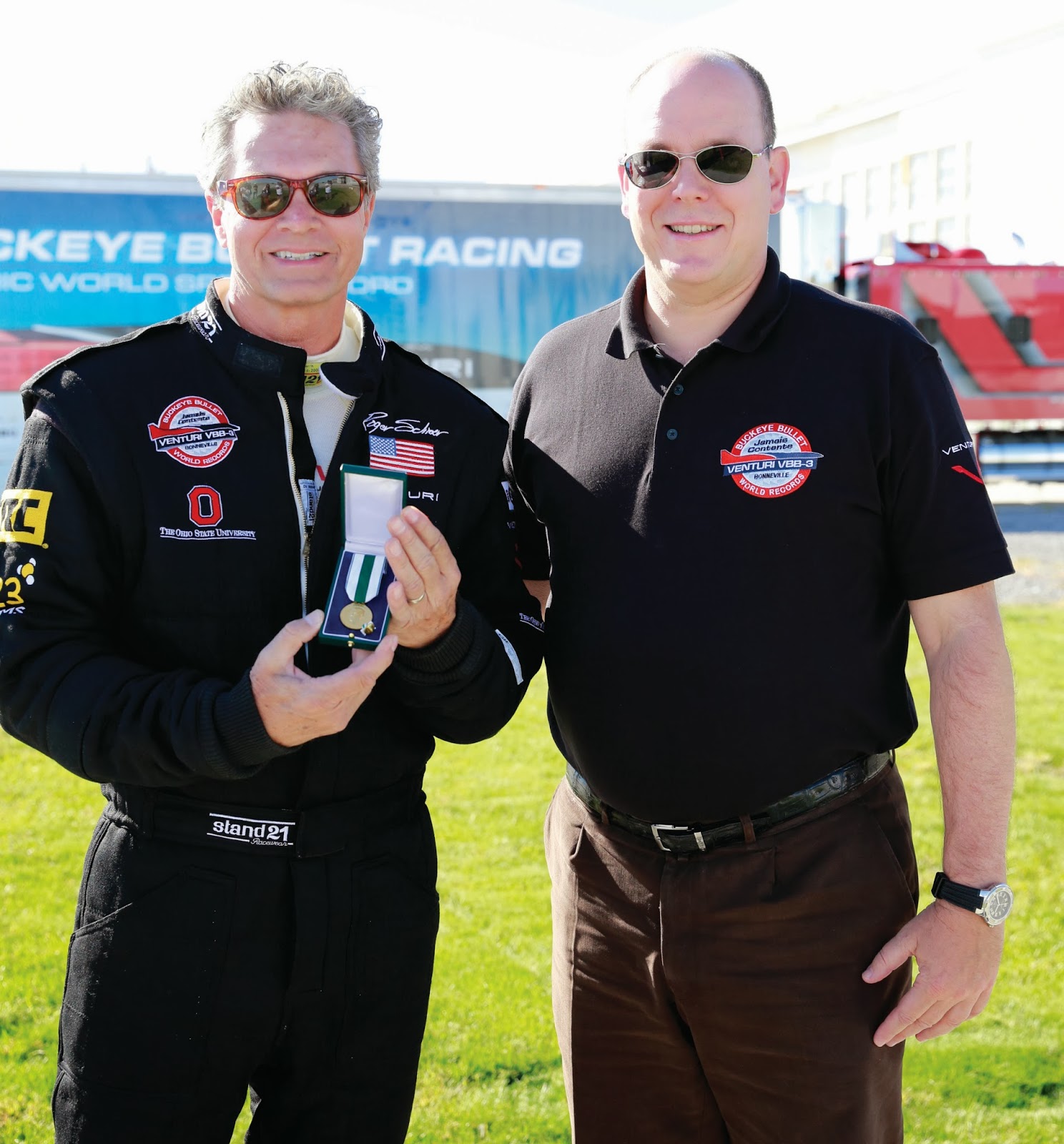Roger
Schroer, performance driver at Transportation Research Center Inc. (TRC Inc.),
recently traveled with The Ohio State University’s (OSU) Buckeye Bullet team to
the Bonneville Salt Flats for Speedweek, in hopes to break last year’s electric
vehicle speed record. The Bullet, named
BB3, was to be driven by Roger, who is the driver for the Bullet each year.
The
meet was originally scheduled for September 12-18, however, a large storm
system flooded the salt flats, leading to eventual postponement of the event.
Venturi, the primary sponsor of the Buckeye Bullet, arranged to have the team
work out of an airport hanger located in Wendover, Utah. On the airstrip, the team was also able to
conduct some low speed testing on one of their taxiways. Since the BB3 is still
being developed, every test run is important, and the team learned a great deal
about the car.
Venturi,
the sponsor of the Buckeye Bullet, is located in the European country of
Monaco. Thierry Apparu of Venturi is an
acquaintance of the royal family in Monaco, leading to a visit by Prince Albert
and Princess Charlene on September 18th. Roger Schroer presented the Prince with a
racing helmet which is a duplicate of the one worn while driving the Buckeye
Bullet. Prince Albert then presented a
medal to Roger Schroer, which was the first time a medal had ever been
presented outside of the palace.
The
team plans to return to Bonneville in 2014 in an effort to raise the electric
vehicle record above 400 MPH. You can
learn more about the BB3 at www.buckeyebullet.com/BB3.html.


